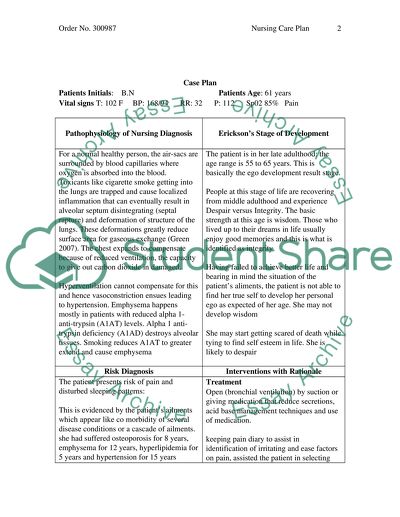Cite this document
(Nursing Diagnosis Assessment Assignment Example | Topics and Well Written Essays - 1750 words, n.d.)
Nursing Diagnosis Assessment Assignment Example | Topics and Well Written Essays - 1750 words. https://studentshare.org/medical-science/1514294-nursing-diagnosis-of-emphysema-osteoporosis-and-hypetension
Nursing Diagnosis Assessment Assignment Example | Topics and Well Written Essays - 1750 words. https://studentshare.org/medical-science/1514294-nursing-diagnosis-of-emphysema-osteoporosis-and-hypetension
(Nursing Diagnosis Assessment Assignment Example | Topics and Well Written Essays - 1750 Words)
Nursing Diagnosis Assessment Assignment Example | Topics and Well Written Essays - 1750 Words. https://studentshare.org/medical-science/1514294-nursing-diagnosis-of-emphysema-osteoporosis-and-hypetension.
Nursing Diagnosis Assessment Assignment Example | Topics and Well Written Essays - 1750 Words. https://studentshare.org/medical-science/1514294-nursing-diagnosis-of-emphysema-osteoporosis-and-hypetension.
“Nursing Diagnosis Assessment Assignment Example | Topics and Well Written Essays - 1750 Words”. https://studentshare.org/medical-science/1514294-nursing-diagnosis-of-emphysema-osteoporosis-and-hypetension.


